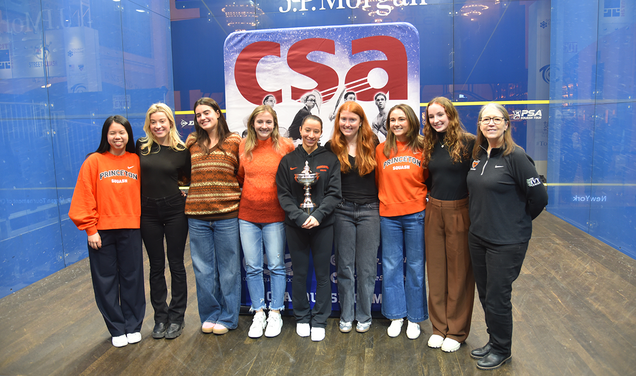
These are both exciting and troubling times for research at Princeton.
In November, the University held its fifth annual Celebrate Princeton Invention forum, a showcase of innovations and products that originated in the laboratories of Princeton researchers. Portable air-pollution sensors, new targeted-drug techniques, ultra-fast photonic technologies, and fuel-production processes based on readily available feedstocks were among scores of featured ideas and applications in various stages of development.
These innovations are examples of work conducted by Princeton faculty, postdoctoral researchers, and students that — as has been the case for generations — creates significant educational, societal, and economic benefits. And they illustrate one reason why the University has committed to new opportunities to support exploratory research at a time when federal funding is being squeezed severely enough to merit warnings of a nationwide “innovation deficit.”
This fall, Princeton introduced a series of competitive innovation funds for our researchers in three areas: bold ideas in the natural sciences; cross-disciplinary collaborations between artists and scientists or engineers; and industrial partnerships. The funds, administered by the office of Dean for Research Pablo Debendetti, will be awarded for intriguing new projects with unproven techniques and no certainty of success — allowing researchers to embrace risk rather than avoid it.
The new funds are in addition to several research-support initiatives established in recent years at Princeton, including the David A. Gardner ’69 Magic Project for work in the humanities; the Eric and Wendy Schmidt Transformative Technology Fund for work in the natural sciences and engineering; the Project X Innovation Fund for work in engineering; and the Intellectual Property Accelerator Fund for the commercial development of nascent technologies.
All of these funds empower Princeton’s researchers to pursue unconventional thinking and follow serendipitous paths that basic research will often take. The most oft-cited example in recent years is that of Emeritus Professor of Chemistry Ted Taylor, whose early-career research on pigments of butterfly wings led to the development of Alimta, a blockbuster cancer drug, decades later. But there are countless other examples of basic research at Princeton developing in unexpected ways and yielding long-term benefits in advancing knowledge in all fields, which is fundamental to the University’s mission of being a world-class research institution.
I am proud of our efforts to support innovation at Princeton. But these initiatives can only complement federal support for our research enterprise. This is why Princeton is committed to working with the higher-education community to call attention to and reverse the erosion of federal funding, which has long been the backbone of research support here and throughout the higher-education community.
As a result of cuts to federal research investment, this country is facing an innovation deficit, as described by an outreach effort led by the Association of American Universities (AAU) and the Association of Public and Land-Grant Universities (APLU). While nations such as China and South Korea are dramatically increasing their own investments in research, the United States is heading in the opposite direction.
The statistics are disturbing: Cuts to discretionary federal spending, known as sequestration, could slash $95 billion from federal research budgets over the next eight years, according to an analysis by the AAU, APLU, and the Science Coalition. The two major sources of federal research grants — the National Institutes of Health and the National Science Foundation — funded about 650 and 600 fewer research projects, respectively, in fiscal 2013 compared to the previous year.
This fall, I joined some 200 university presidents in signing an open letter to President Barack Obama and members of Congress, advocating for sustained, long-term investment in research and higher education. As the letter stated:
“Ignoring the innovation deficit will have serious consequences: a less prepared, less highly skilled U.S. workforce, fewer U.S.-based scientific and technological breakthroughs, fewer U.S.-based patents, and fewer U.S. start-ups, products, and jobs. These impacts may not be immediately obvious because the education and research that lead to advances do not happen overnight. But the consequences are inevitable if we do not reverse course.”
Princeton is fortunate to have the support of generous donors and corporate and foundation partners to enable our researchers to do what they do best: explore their curiosities, defy conventional wisdom, create new knowledge, and mentor the next generations of researchers and teachers. We will continue to seek opportunities, as we have done with our new innovation funds, to inspire the spirit of intellectual adventure that undergirds our great research enterprise.
We also will remain vigilant in challenging those in power in Washington not to forsake their responsibilities to support basic research at Princeton and institutions across America. This country remains at the forefront of innovations that benefit the world and drive economic growth at home, but unless our elected representatives increase funding for research and higher education, our innovation deficit will deepen at everyone’s great peril.











0 Responses